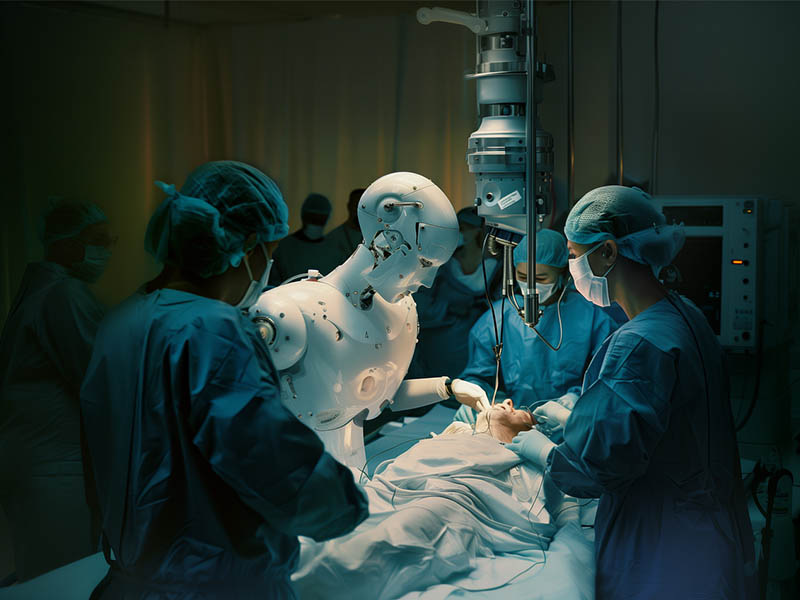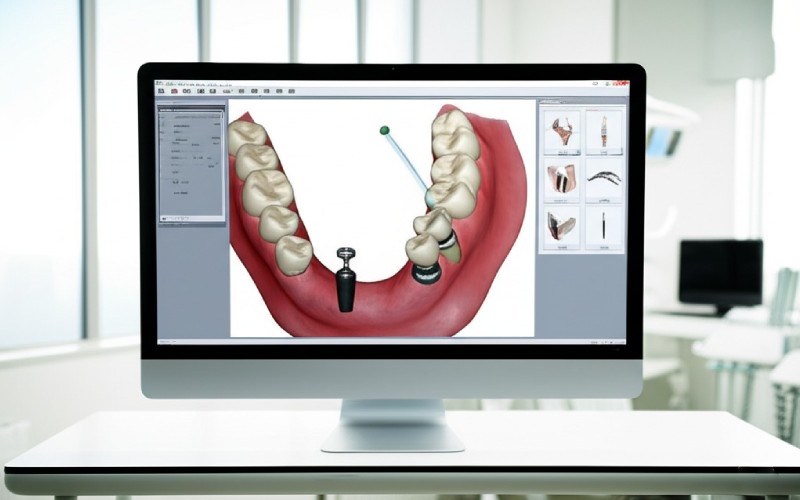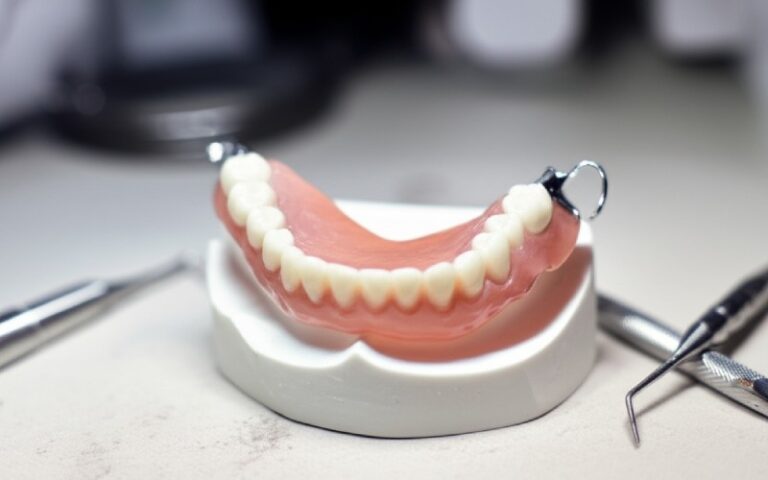
The Robotic Revolution in Dental Implant Surgery: Precision and the Future of Dentistry
For years, we thought of dentistry as a field of steady hands and sharp eyes, pure human skill. The idea of a robot involved in dental implant surgery would have sounded like science fiction. But today, it’s not fiction. It’s a reality that is revolutionizing dental implant procedures. This article is for you if you’ve ever felt nervous about getting a implant dentystyczny or if you’re curious about the future of dental care. I’ll walk you through how this robotic technology works, why it offers a new level of precision, and what it means for your comfort and health. This is the story of the robotic revolution in dental implantology.
Spis treści
What Exactly is the Robotic Revolution in Dental Implantology?
When you first heard the term “robotic revolution in dental,” you might picture a robot standing over a patient, working alone. That’s not the case at all. Think of it more like a highly advanced assistant that helps your dentist do their job even better. The robotic revolution is about bringing a new level of precision and control to dental implant surgery. It uses a special robotic system to guide the dentist’s hand. This ensures that the dental implant is placed in the exact right spot, at the perfect angle, and at the correct depth.
This cutting-edge technology is changing the face of modern dentistry. The most well-known system leading this change is called Yomi, made by a company named Neocis. It is the first and only FDA-cleared robotic assistant for dental surgery. It’s a groundbreaking tool that helps dental professionals perform complex dental implant procedures with incredible accuracy. This use of robotics in dental care is all about making the procedure safer, more predictable, and better for the patient. It’s not about replacing the human touch; it’s about enhancing it with the power of robotics.
How Does Robotic Assistance Enhance Precision in Implant Placement?
So, how does this robot actually help? The key word is precision. In a traditional dental implant surgery, the dentist relies on their skill and experience, sometimes using a plastic guide. While dental surgeons are highly skilled, there is always a small margin for human error. Robotics offers a way to close that gap. The robotic system uses 3D imaging of your jaw to create a detailed surgical plan before the implant procedure even begins. This plan maps out the exact location for the new dental implant.
During the surgery, the robotic arm provides physical guidance to the dentist’s instruments. It does not move on its own. Instead, it gives real-time feedback and assistance, ensuring that the dentist follows the pre-set plan perfectly. This guidance system helps the dentist place the implant with a level of precision that is difficult to achieve by hand. This high precision is what makes robotic assistance so valuable. It enhances precision and accuracy, leading to better results for your dental implant. This is a big step forward compared to traditional methods that rely on freehand work or static surgical guides.

Is Robotic Implant Surgery Really Better Than Traditional Methods?
“Is the new way really better than the old way?” When it comes to robotic implant surgery, the answer for many people is a clear yes. The main advantage is the incredible precision and control it offers. This precision ensures that the implant is placed in the ideal position for long-term success. A perfectly placed implant not only looks better but also functions better and is less likely to have problems down the road.
Beyond precision, this advanced technology often allows for a minimally invasive procedure. Because the dentist knows the exact path, they can often make smaller incisions. This means less discomfort for you during and after the surgery. It also leads to a faster patient recovery. With traditional dental implants, there can be more swelling and a longer healing time. Robot-assisted implant surgery helps reduce these issues, making the entire experience smoother. Fewer complications and better patient outcomes are the goals of this cutting-edge robotics.
What Role Does the Dentist Play During a Robot-Assisted Implant Procedure?
This is a common question, and it’s an important one. The dentist is always in 100% control. The robot is a tool, not the one in charge. Your dentist or dental surgeons plan the entire surgery and are the ones performing the implant procedure. The robotic system acts as a guide, like a GPS for the surgeon’s hand. It provides haptic feedback, which is a fancy way of saying it gives the dentist a sense of touch through the instruments.
Imagine you are drawing a perfect circle. It’s hard to do freehand. Now, imagine you have a compass. You are still the one drawing the circle, but the compass guides your hand to make it perfect. That’s what the robotic arm does for the dentist. The dentist holds the drill, and the robot ensures that the drill stays on the planned path. The dentist can stop or change course at any time. This partnership between the dentist and the robot is what makes the dental implant surgery so successful.
Who is Behind this Revolutionizing Dental Technology?
Every great innovation has a visionary behind it. The story of robotics in dentistry is no different. The leading company in this field is Neocis, and its CEO and co-founder is Alon Mozes. He saw a need for improving precision in dental surgery. Before starting Neocis, Alon Mozes worked on medical robotics for brain and spine surgery. He realized that the same principles could be applied to dentistry to make dental implant procedures safer and more accurate.
His vision led to the creation of the Yomi robotic system, the only FDA-cleared robotic system of its kind. Getting clearance from the FDA is a big deal. It means the technology has been carefully tested and proven to be safe and effective. The work of Alon Mozes and the team at Neocis is a huge part of this revolution in dental care. Their dedication is helping to create a new standard for implantology and transforming dental practices around the world.
How Does Robotic Implant Planning Work?
The magic of this robotic technology begins long before the implant surgery. It all starts with implant planning. First, your dentist will take a 3D scan of your mouth. This scan creates a perfect digital map of your teeth, jawbone, and nerves. Using this 3D imaging, your dentist can use the robotic system’s software to plan the entire dental implant surgical procedure on a computer.
The dentist can choose the right size and type of implant. They can place the virtual implant in the digital model of your jaw, adjusting the angle and depth until it is perfect. This surgical planning is incredibly detailed. Once the plan is set, the robot locks it in. During the actual surgery, the robotic guidance system ensures that the implant is placed exactly according to this pre-made plan. This process removes the guesswork and is key to improving precision.
Can Robotics Handle Complex Cases and Full-Arch Restorations?
Yes, and this is where robotics truly shines. Some patients need a single dental implant, which can be straightforward. But others have more complex cases. They might have lost a lot of bone, or they may need multiple implants. Another challenging area is full-arch cases, where all the teeth on the top or bottom jaw are replaced with implants. For these situations, precision is everything. A tiny error in angle or position can affect the entire result.
This is where robotic assistance becomes a game-changer. The high precision of the robotic system is perfect for these difficult dental surgeries. It allows the dentist to place implants very close to each other or navigate around sensitive nerves with confidence. For full-arch cases, the system ensures that all the implants are perfectly parallel, which is critical for the final bridge to fit correctly. This ability to handle complex cases makes it a powerful tool for dental specialists.
What are the Main Benefits for Me, the Patient?
As a patient, what you care about most is your own health and comfort. So, let’s talk about how this revolutionizing dental implant technology benefits you directly. The biggest benefit is peace of mind. Knowing that your dental implant is being placed with the highest level of precision possible is very reassuring. This precision leads to a better-fitting, more stable implant that is built to last. It truly is the best solution for missing teeth.
You will also likely experience more patient comfort. Because the procedure can be minimally invasive, there is often less pain, swelling, and bleeding. This means patient recovery is usually quicker, and you can get back to your normal life faster. A better patient experience is a huge part of this new approach. It reduces patient discomfort and anxiety about the implant procedure. It ensures that the implant is placed correctly the first time, reducing the need for follow-up invasive procedures.
Why Should a Modern Dentistry Practice Adopt This Robotic Technology?
A modern dental practice is always looking for ways to provide better care and improve efficiency. Adopting this fda-cleared robotic technology is a smart move. It demonstrates a commitment to providing the best possible patient outcomes. This dedication to using cutting-edge technology can set a dental practice apart from the competition.
Using robotics offers a clear advantage in precision and efficiency. Surgeries can sometimes be completed in less chair time. This is good for the patient and good for the practice. Moreover, when patients know a practice uses the latest technology, they feel more confident. This can lead to higher case acceptance rates. Dental professionals who use this technology find that it helps them provide a higher standard of care, which is the ultimate goal of any healthcare provider.

What is the Future of Dental Implants and Robotics?
This is just the beginning of the robotic revolution in dental care. We are seeing amazing advancements in dental technology right now, and the future of dental implants looks even brighter. As robotic technology continues to improve, we can expect even more precise and less invasive dental procedures. The future of implant dentistry will likely see robotics become a standard tool in every advanced dental practice.
The use of dental robotics is expanding. Soon, we may see robotic systems helping with other parts of dentistry beyond the dental implant. This is the future of dental care: a partnership between skilled dentists and smart technology. It’s about revolutionizing dentistry to make it safer, more comfortable, and more effective for everyone. This technology is revolutionizing dental implant procedures, and it will continue to shape the future of our smiles for years to come.




